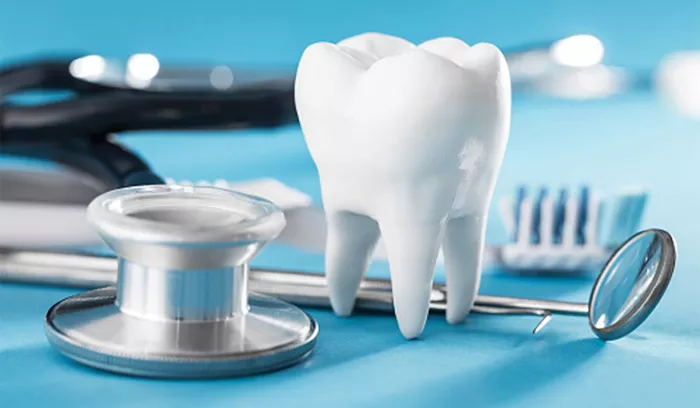Dental insurance is an essential component of maintaining good oral health without incurring prohibitive costs. Among the many terms and conditions associated with dental insurance policies, the “deductible” is a critical concept that policyholders need to understand. This article will explore what a deductible in dental insurance is, how it works, its advantages and disadvantages, and tips for managing dental expenses effectively.
Defining a Deductible in Dental Insurance
What is a Deductible?
A deductible is the amount of money a policyholder must pay out-of-pocket before their dental insurance plan begins to cover the costs of dental services. This amount varies depending on the specific insurance policy and can range from a few dollars to several hundred dollars annually.
Annual Deductibles
Most dental insurance plans feature an annual deductible. This means that once you pay the deductible amount within a given year, your insurance will start covering the eligible dental expenses for the remainder of that year.
How Deductibles Work in Dental Insurance
Initial Out-of-Pocket Costs
When you receive dental care, you initially pay for the services until the total amount reaches your deductible. For example, if your deductible is $100, you must pay the first $100 of your dental expenses out-of-pocket.
Coverage After Deductible
Once the deductible is met, your insurance plan will start to cover a portion of your dental costs. The percentage of coverage depends on your plan’s details and the type of dental service received.
Types of Deductibles in Dental Insurance
Individual vs. Family Deductibles
Individual Deductibles: Applied per person. Each family member on the policy has their own deductible.
Family Deductibles: A maximum limit that the entire family must pay before the insurance starts covering costs for all family members. Once the family deductible is met, no further deductibles are applied for the rest of the year for any family member.
Embedded vs. Non-Embedded Deductibles
Embedded Deductible: Each family member must meet their individual deductible before the insurance starts to pay for their expenses.However, if the family deductible is met first, then all members are covered.
Non-Embedded Deductible: The entire family’s combined expenses must reach the family deductible before the insurance begins to cover any costs.
Advantages of Deductibles in Dental Insurance
Lower Premiums
Insurance plans with higher deductibles generally have lower monthly premiums. This can make dental insurance more affordable, especially for those who do not require frequent dental care.
Budgeting for Care
Knowing your deductible amount helps in planning and budgeting for your dental care expenses throughout the year. It encourages policyholders to allocate funds for potential out-of-pocket costs.
Preventive Care Focus
Many dental insurance plans cover preventive care services like cleanings and check-ups without requiring the deductible to be met. This encourages regular dental visits and early detection of potential issues, promoting better oral health.
Disadvantages of Deductibles in Dental Insurance
Upfront Costs
The primary disadvantage is the requirement to pay out-of-pocket before receiving insurance benefits. For some, this initial cost can be a financial burden, especially if multiple family members need care.
Complexity
Understanding the details of how deductibles work can be confusing. Policyholders need to be well-informed about their plan’s specifics to avoid unexpected costs.
Limited Coverage Until Met
Until the deductible is met, policyholders bear the full cost of dental services. This can be challenging if significant dental work is needed early in the policy year.
See Also: What Does No Deductible Health Insurance Mean
Managing Dental Expenses with Deductibles
Understand Your Plan
Thoroughly review your dental insurance policy to understand the deductible amount, coverage percentages, and any exceptions to the deductible requirement.
Budget for Deductibles
Set aside funds specifically for your deductible at the beginning of the policy year. This ensures you are prepared for any out-of-pocket expenses that arise.
Utilize Preventive Services
Take advantage of preventive care services covered by your plan without requiring the deductible. Regular cleanings and exams can prevent more serious and costly dental issues.
Coordinate with Providers
Discuss treatment plans and costs with your dental provider. They can help you understand the timing and cost of procedures, allowing you to plan effectively.
Dental Insurance Plans Without Deductibles
No-Deductible Plans
Some dental insurance plans do not have a deductible. Instead, they may use a different cost-sharing structure, such as copayments or coinsurance, from the start.
Higher Premiums
Plans without deductibles often have higher monthly premiums. This trade-off can be beneficial for those who prefer predictable costs over the year without facing upfront out-of-pocket expenses.
Preventive-Only Plans
Certain plans focus solely on preventive care and have no deductible. These plans cover regular cleanings and exams but may offer limited coverage for restorative or major dental work.
Impact of Deductibles on Different Dental Services
Preventive Services
Services like cleanings, X-rays, and exams are often covered without requiring the deductible to be met. This encourages regular dental visits and maintenance of oral health.
Basic Services
Fillings, extractions, and other basic dental procedures typically require meeting the deductible before the insurance coverage kicks in. Understanding this helps in planning for these costs.
Major Services
Procedures like crowns, bridges, and dentures usually involve higher costs and may require the deductible to be met before the insurance starts covering a portion of the expenses.
Comparing Deductibles in Dental vs. Medical Insurance
Dental vs. Medical Deductibles
While both dental and medical insurance have deductibles, dental deductibles are generally lower. The approach to cost-sharing and coverage also varies between the two types of insurance.
Annual Maximums
Dental insurance plans often have an annual maximum benefit limit, which is the maximum amount the insurance will pay in a year. Understanding this limit is crucial in conjunction with the deductible to manage expenses effectively.
Coordination of Benefits
For those with both dental and medical insurance, coordinating benefits can help maximize coverage and minimize out-of-pocket costs. Understanding how each plan’s deductible works is essential in this coordination.
Finding the Right Dental Insurance Plan
Assess Your Needs
Consider your and your family’s dental health needs, frequency of dental visits, and potential for requiring major dental work. This assessment will help determine the appropriate deductible level.
Compare Plans
Review and compare different dental insurance plans, focusing on the deductible amounts, coverage percentages, annual maximums, and premium costs.
Consult a Professional
Insurance brokers or dental office staff can provide valuable insights and help you understand the nuances of different plans, ensuring you choose the best option for your needs.
Practical Tips for Policyholders
Keep Track of Expenses
Maintain records of your dental expenses throughout the year. This helps in monitoring when you’ve met your deductible and planning for future care.
Maximize Benefits
Schedule necessary dental work after meeting your deductible to maximize your insurance benefits. This strategic planning can reduce out-of-pocket costs.
Stay Informed
Regularly review your dental insurance policy for any changes in deductible amounts, coverage details, or network providers to stay informed and avoid surprises.
Conclusion
Understanding what a deductible is in dental insurance and how it works is crucial for effectively managing your oral health care expenses. By comprehensively grasping the advantages and disadvantages of deductibles, policyholders can make informed decisions, budget appropriately, and maximize their dental insurance benefits. Always remember to review your specific policy details, consult with professionals if needed, and plan your dental care strategically to ensure a healthy smile without financial strain.
[inline_related_posts title=”You Might Be Interested In” title_align=”left” style=”list” number=”6″ align=”none” ids=”2820,2711,2708″ by=”categories” orderby=”rand” order=”DESC” hide_thumb=”no” thumb_right=”no” views=”no” date=”yes” grid_columns=”2″ post_type=”” tax=””]




















